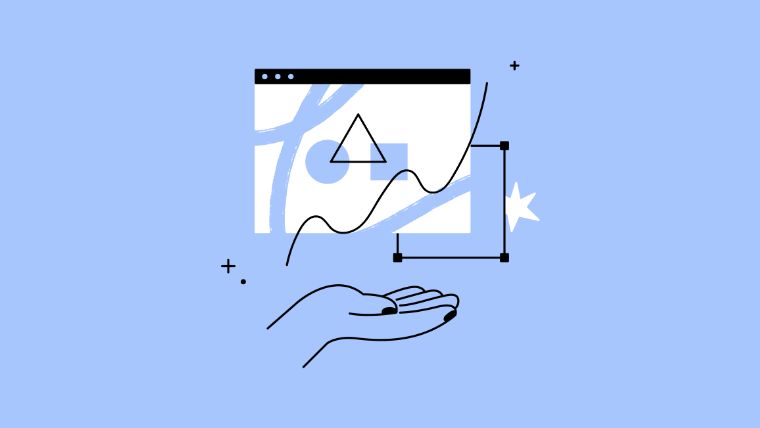Our 2023 State of Education Initiative Ownership survey found that 60% of education professionals think there’s a mismatch between what customers are promised and the outcomes they’re able to deliver.
This mismatch creates a problem for both customers and businesses alike. When customers don’t find value in a product, they start looking for new solutions. So how can SaaS and other B2B companies ensure customers find value from their products and services? Customer enablement.

By the end of this article, you’ll understand what customer enablement is and how it differs from sales enablement. You’ll also learn tips and best practices to start enabling customers.
What is Customer Enablement?
Customer enablement equips customers with the tools and resources they need to be successful with your product.
This can look like templates, tools, and other resources. It can also include customer education and training.
For companies that rely on recurring revenue, customer enablement plays a key role in customer success.
What Are The Benefits of Customer Enablement?
Customer enablement programs improve the overall customer experience. As a result, effective customer enablement programs can provide immense benefits—both to you and your customers.
Customer enablement empowers customers to:
- Find value quickly
- Experience better outcomes
- Be more successful in their role and with your product
For your business, customer enablement increases:
- Customer loyalty
- Customer satisfaction
- Customer retention
- Customer lifetime value (CLTV or LTV)
- Referrals and advocacy
Clearly, a lot of great benefits!
What Are Examples of Customer Enablement?
Customer enablement can take a lot of forms. To see it in practice, we talked with two customer enablement professionals to learn about what they’re doing.
Dan Park is a Customer Enablement Manager at Assignar. He shared that his team supports customers with product-focused webinars and help center articles. In addition, Assignar equips customers with broader industry-related resources.
Dan shared that his favorite assets to create are collaborative, cross-functional resources. These resources drive buy-in across teams and result in better, more thoughtful content.
We also spoke with Sana Farooq, Customer Education and Customer Success Consultant. Sana shared that she enjoys coordinating go-to-market (GTM) releases. These releases help customers get more value from their software. They also bring the company together around a shared goal.
Other customer enablement examples include the following:
- Customer enablement onboarding processes and checklists
- Customer success playbooks
- Customer quarterly business reviews
- Customer community events and podcasts
- Resources promoting additional features and services
Customer Enablement vs. Sales Enablement
Still nascent in the industry, customer enablement is often ill-defined. A few distinctions can help to understand customer enablement’s definition and how it differs from sales enablement.
Sales enablement is how a company ensures its sales department has the resources they need to sell effectively.
Customer enablement is when a company creates materials for the customer to support their success using the product.
Customer enablement ensures teams continue to support customers post-sale. They do this by providing relevant resources throughout the customer lifecycle to help them grow and get more value from the product.
How does customer education fit in? Sana shared that customer education “uses data to get ahead of where and how customers get stuck.”
But creating customer enablement resources alone is not enough. Companies must also train and empower their customer success managers (CSMs) to share and use them, as well.
Customer success enablement trains your customer success (CS) team on how to use your customer enablement materials. Sana shared that customer success enablement helps your CS team “have comprehensive knowledge of the product and new releases, also for the benefit of the customer.”
So let’s recap—what’s the difference between customer enablement and sales enablement? While customer enablement focuses on creating materials for your customer’s benefit, sales enablement helps sellers make the sale.
These distinctions don’t require separate resources for different teams or functions. Many customer enablement materials are also beneficial for prospects and sellers.
Don't reinvent the wheel by creating and delivering new resources for different audiences. Instead, adopt a learning management system (LMS) designed to deliver information to multiple groups.

Get Started with Customer Enablement
By 2025, Gartner predicts more than 60% of frontline sales enablement organizations will enable additional customer-facing roles to improve the customer journey beyond the initial sale.
If you're reading this, you're likely looking to get ahead of this trend. Try these four customer enablement strategies to support your customers’ success.
1. Educate customers
If onboarding checklists are the roadmap to help customers see what needs to be done and when, then customer education is the vehicle that gets them from one destination to the next.
Customer education content can take a number of forms, including:
- Videos
- Courses
- Certifications
- Training
- Help articles
- Tutorials
Comprehensive education helps prevent customer challenges, reduce reliance on customer support, and assist customers in reaching their goals.
In fact, our 2022 report found that companies with formalized and curriculum-based education initiatives outperform more ad hoc programs.

2. Provide outstanding support
While customer education helps prevent many issues, some customers still require direct support.
If your company provides outstanding customer support, you’ll retain customers longer—but they aren’t the only ones who benefit.
Customer support requests can inform education content. Take a look at your help tickets to uncover where customers get stuck—so you can be proactive in addressing their needs.
3. Create community
Customer communities enable customers to talk things through, learn from peers, and solidify learning in ways that give life to the concepts you taught them. This process frees up your customer support team to handle the most complex issues—and allows your customer education team to focus on content that serves the majority of use cases.
Communities can also give rise to new enablement materials. Think about resources, tips, and templates customers share. Often, what's helpful for one customer is helpful for many. You can pull from these resources to create additional enablement materials to serve your customer base.
By offering customers this opportunity for social learning, your company can improve learner retention and outcomes as customers observe peer experiences, collaborate, and get feedback.
4. Collect customer feedback and improve
Keep in mind: Your customer enablement program is never "finished!" You'll continue to review and refine your resources. Over time, you may even sunset some resources that are no longer useful or relevant.
The best way to iterate is by collecting and acting on customer feedback. This feedback allows you to understand customer needs. And, in turn, those needs inform and refine your strategies and materials.
Where can you find customer feedback? Customers are already sharing their experiences through communities, Net Promoter Score (NPS) surveys, and support tickets. Use this readily accessible data to make improvements and address knowledge gaps.
4 Best Practices From Customer Enablement Professionals
Ready to tackle customer enablement? Check out these tips and best practices from customer enablement professionals:
1. Don't recreate the wheel.
Sana recommends cataloging and leveraging internal resources. This includes knowledge base articles, courses, and onboarding guides. It can also mean interviewing internal employees to capture their knowledge and process.
Repurposed materials can serve both external customers and employees alike. “There's valuable knowledge everywhere. You just have to be proactive and resourceful in finding it,” Sana shared.
2. Look to internal subject matter experts.
It's likely there are people in your company who are already working on customer enablement. Dan recommends finding those people—even if they don't have the enablement title.
“External inspiration is great for frameworks, ideas, and best practices. Internal inspiration helps to apply those to your customers,” Dan shared.
You might find conversations with solutions engineering, sales, support, and customer success to be beneficial.
3. Keep the customer in focus.
It’s easy to get bogged down in the details. But, often, these details matter more to you than the customer, Dan remarked. His advice? “It’s helpful to schedule regular check-ins to step back, get feedback, and make adjustments.”
4. Don’t strive for immediate perfection.
The first version of a training program or resource won’t be perfect, but don’t let that hold you back.
“Try things out, learn from feedback, and iterate. It’s said that ‘good is the enemy of great.’ But rarely is great achieved without good." - Dan Park
Effective Customer Enablement Is Exciting and Meaningful Work
It’s an exciting time to work on customer enablement. The field is growing—and becoming better defined.
Customer enablement is truly the key to bridging the gap between promises made and outcomes delivered in the dynamic B2B landscape. We hope you’ve found this blog insightful as you start your customer enablement journey!



.png)

